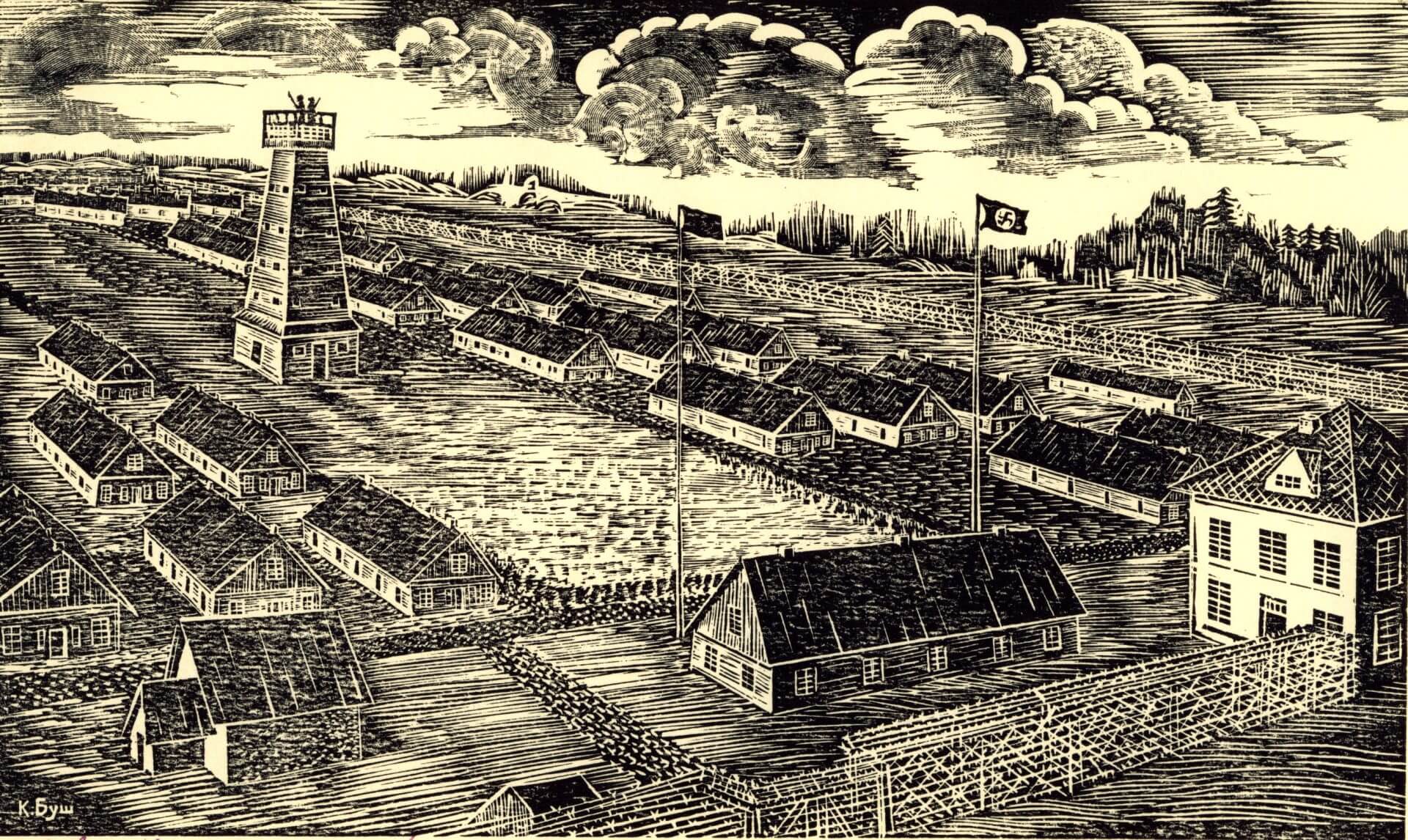Salaspils Camp (1941-1944)
Salaspils Camp was a repressive punishment camp created by Nazi Germany in
occupied Latvia. Construction began in November 1941, and in May 1942, a double
barbed wire fence was installed around the camp. Prisoner barracks were arranged in
a horseshoe form in three rows. Each barracks held approximately 200 people, bet
there are indications that sometimes they housed over 600. In May 1943, a total of 30
barracks had been built; half were occupied by inmates, but the remainder were used
for various purposes. The Camp was guarded by armed guards, who were located on
six guard towers 6-7 meters high and 60-70 meters apart surrounded by a barbed wire
fence; prisoners were not allowed to approach the fence closer than 20 meters. At the
centre was a water tower with searchlights, machine guns and a siren, which was
activated during escape attempts.
Salaspils Camp was officially know as an extended police prison and labor
correction camp (Erweitertes Polizegefängnis und Arbeitserziehungslager), because it
was subordinate to the Commander of the Security Police and SD in Latvia, SS
Sturmbannführer Rudolf Lange, and not the concentration camp administration in
Berlin. The Camp was created as an “extended police prison” for political prisoners,
and in the summer of 1942, its purpose was extended as a “labor correction camp” for
those who did not follow work regulations. In the beginning of 1943, a special section
was opened for members of Baltic Police Battalions and Legionnaires tried and
convicted by the SS and police courts. Later, Salaspils Camp became a transit camp
for civilians brought from Belorussia, Russia, and Latgale, who were later sent as
labourers to Germany. In December 1943, transfer of political prisoners from
Salaspils to concentration camps in Nazi-occupied Poland and Germany began: by the
end of the war, approximately 4000 people had been transferred of whom more than
1500 died. A few months before the closure of the camp, about 2000 prisoners were
enrolled in various military units.
Data indicates that approximately 23 000 people may have been imprisoned in
Salaspils Camp: half were political prisoners, work avoiders and convicted soldiers,
and the remainder were prisoners resulting from special campaigns against civilians in
Belorussia, Russia and Latgale. During the winter of 1941/1942, extreme living and
work conditions resulted in the deaths of approximately 1000 Jews brought from
Germany, Austria, and Czechoslovakia for construction of Salaspils Camp. From May
1942 to September 1944, about 400-500 people died from disease, over 30 were shot
for planning or attempting to escape, 100-150 people died from extreme work
conditions or as a result of brutal punishments, and several hundreds of children died
from insufficient nourishment, humiliation, illness, and epidemics. The death toll at
Salaspils Camp reached 2000 at least, but if the number of Jews who died during
construction is included, the figure reaches well over 3000
